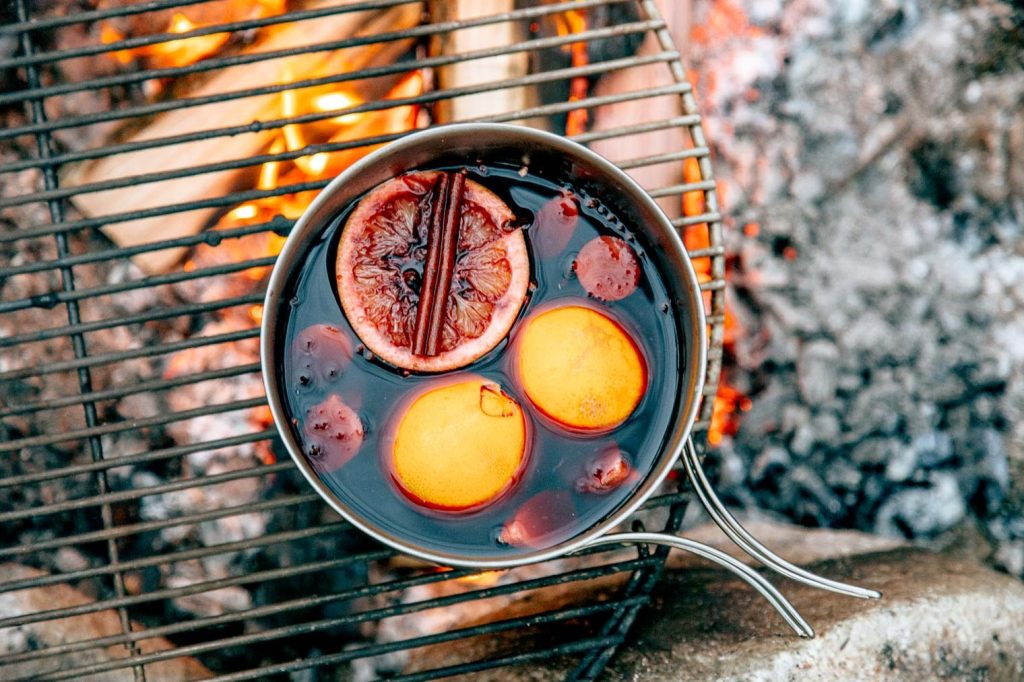Imagine sipping on a steaming mug of mulled wine, feeling the warmth spread through your fingers on a chilly evening. This isn't just any winter drink; it's a sip of history that dates back to ancient Rome and Greece. Back then, warming wine wasn't just about savoring its enhanced flavors or seeking comfort during the cold months; it was a necessity. Fast forward to the Middle Ages in Europe, and the tradition of mulling wine with a rich blend of spices and fruits takes on a new life, becoming a staple at winter celebrations and Christmas markets. Each sip is a toast to centuries of tradition, evolving through regions with their unique twists on the recipe. Cinnamon, cloves, ginger, and nutmeg dance on your palate, accompanied by the sweet notes of oranges, apples, and raisins. But how did this festive beverage weave its way into the fabric of modern celebrations, and why does it continue to enchant us during the holiday season?
Key Takeaway
Day Activities
-
Kick-off National Mulled Wine Day with a bang by hosting a mulled wine-making party. Gather friends or family, each bringing a different spice or fruit, to mix and match flavors. This hands-on activity not only warms the belly but also the heart, making for a memorable day.
-
For those keen on history, diving into the past of mulled wine offers a fascinating journey. Organize a small talk or presentation, detailing its evolution from ancient Rome to medieval Europe. This educational session can be paired with tasting different mulled wine recipes, highlighting the evolution of taste over centuries.
-
Community involvement can elevate the celebration. Reach out to local cafes or bars to see if they're interested in crafting a special mulled wine menu for the day. It's a win-win: businesses get a boost, and folks have the chance to savor professionally made mulled wine, perhaps discovering a new favorite haunt.
Interesting Facts
1. Ancient Origins
Mulled wine dates back to ancient Rome and Greece, warming up history with every sip.
2. Medieval Popularity
In the Middle Ages, mulled wine became a European winter favorite, especially during Christmas.
3. Spice It Up
Common spices like cinnamon and nutmeg give mulled wine its signature festive flavor.
4. Fruitful Additions
Oranges, apples, and raisins often find their way into a steaming pot of mulled wine.
5. Celebrate on March 3
National Mulled Wine Day was established in 2006, inviting everyone to cozy up with this spiced drink.
Why We Love This Day
- Celebration of a timeless tradition
Who doesn't love a good throwback? National Mulled Wine Day takes us on a journey back to ancient Rome and Greece, where warming up wine was all the rage. Fast forward to the Middle Ages in Europe, and you've got a tradition that's not just about staying toasty but also about spicing things up—literally. With each sip, we're connecting with centuries of history, making this day a toast to traditions that have warmed the hearts (and bellies) of many through the ages.
- A toast to winter warmth and festivity
Let's face it, winter can be a bit of a bummer with its chilly days and long nights. But here comes National Mulled Wine Day, like a hero in a cape, offering us a delicious way to beat the cold. Sipping on a cup of mulled wine is like wrapping yourself in a warm blanket of spices and fruits. It's not just a drink; it's an experience that adds a sprinkle of joy and a dash of festivity to the dreariest of winter days.
- Culinary creativity and communal joy
One of the best parts about National Mulled Wine Day? It's a perfect excuse to get creative in the kitchen and maybe even start a little friendly competition with friends or family over who can concoct the best mulled wine recipe. From choosing the right red to mixing in the perfect blend of cinnamon, cloves, and oranges, everyone gets to add their personal touch. Sharing these creations brings people together, making memories over mugs of this heartwarming beverage.
Past & Future Dates
| Month | Day | Year |
|---|---|---|
| MARCH | 3 | 2022 |
| MARCH | 3 | 2023 |
| MARCH | 3 | 2024 |
| MARCH | 3 | 2025 |
| MARCH | 3 | 2026 |
| MARCH | 3 | 2027 |
| MARCH | 3 | 2028 |
FAQ
What is the tradition of mulled wine?
Mulled wine originated in the 2nd century, a concoction brewed by the Romans who believed warming wine would help fend off the chill of harsh winters. As Rome expanded its dominion across Europe, so too did the popularity of mulled wine, following the legions and traders to far corners of the continent.
Which country drinks the most mulled wine?
Scandinavian countries hold the record, with Sweden and Denmark leading the pack, enamored with their versions known as Glögg and Gløllg, respectively. Not far behind, Germany and its neighbors keep the tradition alive, cherishing their Glühwein during the frosty months.
Is mulled wine still alcoholic?
Absolutely, fans of the warm, comforting brew can breathe easy. A study by the U.S. Department of Agriculture in 2007 confirmed that about 85% of the alcohol in mulled wine remains intact after heating, ensuring that the spirited essence of this wintertime favorite is preserved.
What is mulled wine referred to as?
Known affectionately as spiced wine, mulled wine is that perfect winter warmer. Made by simmering red wine with a selection of mulling spices and sometimes raisins, it's traditionally served hot or warm, becoming a staple at winter festivities, particularly during the Christmas season.
